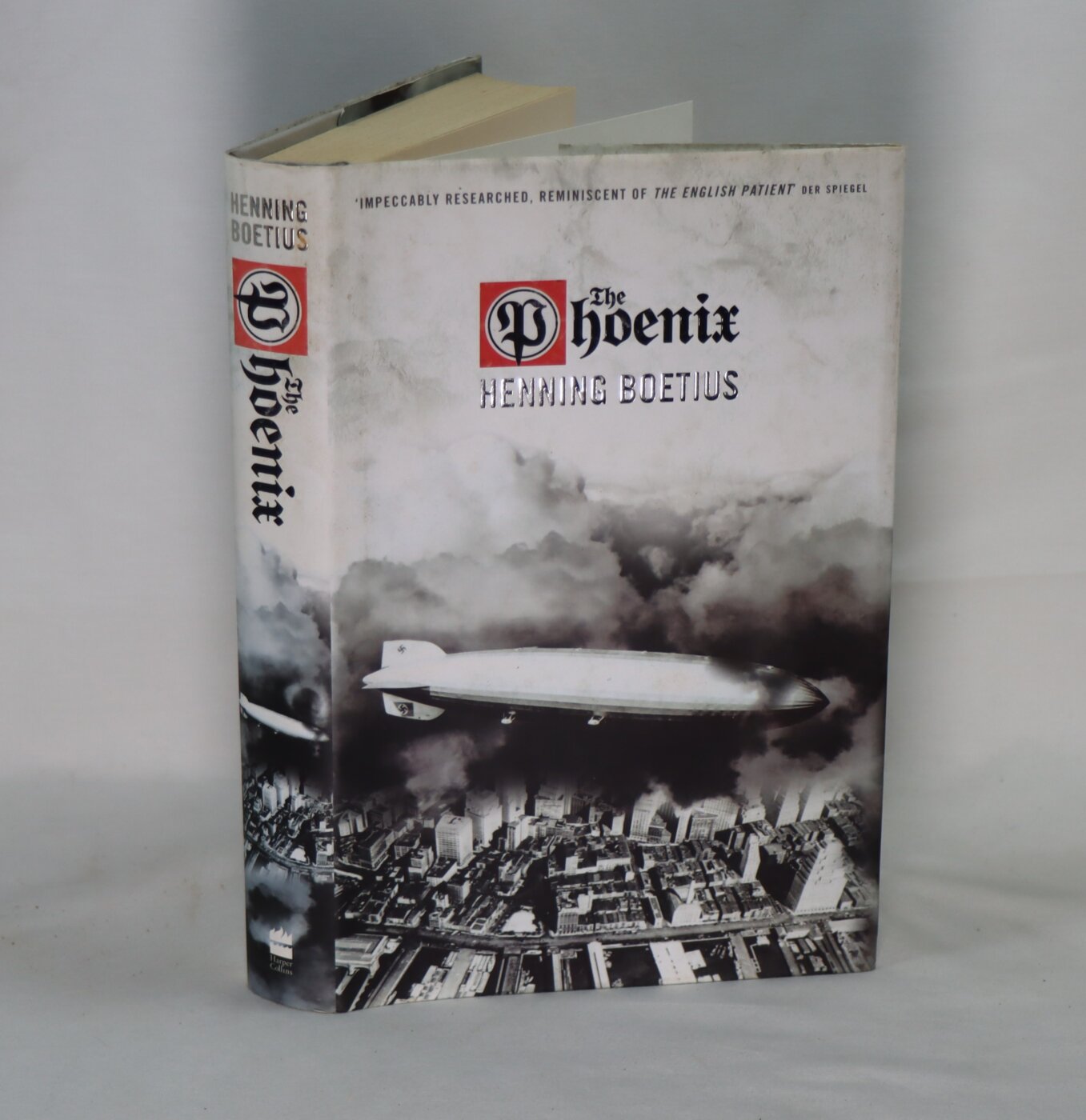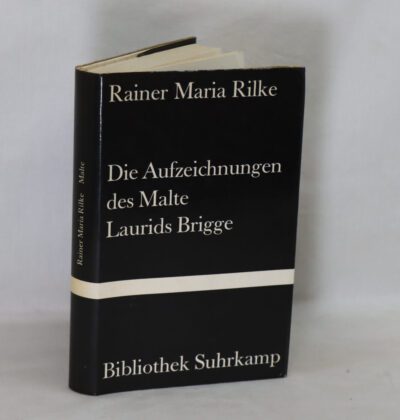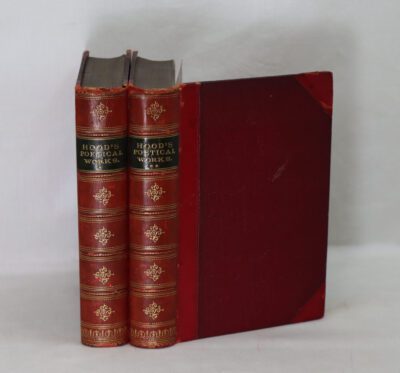The Phoenix.
By Henning Boetius
ISBN: 9780007109524
Printed: 2001
Publisher: Harper Collins.London
| Dimensions | 16 × 24 × 3 cm |
|---|---|
| Language |
Language: English
Size (cminches): 16 x 24 x 3
Condition: Fine (See explanation of ratings)
Item information
Description
In the original dust jacket. Grey cloth binding with silver title on the spine.
- We provide an in-depth photographic presentation of this item to stimulate your feeling and touch. More traditional book descriptions are immediately available
Note: This book carries a £5.00 discount to those that subscribe to the F.B.A. mailing list.
For all those who love novels like Fatherland by Robert Harris, The Phoenix – a brilliant thriller based on the inside story of the airship disaster – is a great find.
Airships were the Concordes of their era – elegant, exciting, luxurious – and the Hindenburg was Germany’s pride. When it mysteriously exploded on arrival in the US in 1936 Goering pronounced the disaster an ‘accident’. However, whispers soon circulated that it was sabotage. But by whom and why? And why were 28 of the survivors declared dead by the Nazi authorities?
Birger Lund is one of them. Horrifically burnt in the flames, he is unrecognisable even to himself, but like the phoenix from the ashes, he arises from the dead with a new face and a new identity. However he realises he cannot embrace his future without confronting his past. So, briefly reunited with the girl he fell in love with ten years before on the Hindenburg’s last voyage, he treks across post-war Germany in search of the truth about the crash. His journey leads him to a remote island off the north coast of Germany – to the home of the last pilot on the Hindenburg. However, the islanders appear to have not accepted the end of the war, and are determined to protect – with violence, if necessary – any secrets the pilot may have…
The author is himself the son of one of the officers on the Hindenburg.
Review: Henning Boetius is the son of Eduard Boetius, the man who was at the wheel of the elevator control when the Hindenburg exploded and crashed in New Jersey in 1937. At the time this book was written his father was the only survivor of the tragedy to still remain alive and so the son Henning is in a unique position to write “The Phoenix”, a novel of historical fiction based on this 1937 tragedy.
The explosion and crash of the Hindenburg mat not be the number one topic on the list of unsolved mysteries, but it remains an event of historical import and of fascination in general, and a topic for those who believe the truth of the explosion that brought down the massive vessel has yet to be explained and shared. This book is not a study of what happened, although the demise of the ship plays a major role. It is as much about the history before and after the event, the lives that were ended and altered, and the war that engulfed much of the world. The book is also about a search for the truth as it applies to the Hindenburg and many of the people involved whether they were scientists, politicians, or just witnesses.
One of the most engaging aspects of the book were the explanations of how these massive ships actually worked, the science behind what were incredibly complex vehicles that were paradoxes of incredible strength and concurrent fragility. The author has one scientist explain the various scientific principles that make these ships work through the scientists that discovered how lighter than air gas behaves, what happens when it is heated, when pressure is applied, and how much any given item actually weighs here on Earth. It was all very well communicated for the lay-person.
Mr. Boetius has written over 20 books, and while this is the first of his I have read, I will certainly seek out additional writing by this man.
Henning Boëtius grew up as the son of Eduard Boëtius in Föhr and in Rendsburg . He studied German and philosophy at the Johann Wolfgang Goethe University in Frankfurt am Main under Theodor W. Adorno and received his doctorate in philosophy in 1967 with a thesis on Hans Henny Jahnn .
He then worked at the Freies Deutsches Hochstift in Frankfurt am Main until 1973 , working on the historical-critical edition of the works of Clemens Brentano . In the 1970s, after giving up his job as a Germanist, Boëtius fell into a deep life crisis which temporarily led him to social isolation. He tried out various jobs, including musician, painter and goldsmith , and was a househusband , but then also lived without a permanent residence for a time . In the 1980s, under the influence of the publisher Vito von Eichborn , he began to write fiction which was published by Eichborn’s publishing house and enabled Boëtius to make a living as a freelance writer.
Boëtius was the author of an extensive body of work, which primarily includes novels , but also essays , poetry , children’s books , dramas and radio plays . He took the themes of many of his works from the history of German literature in the eighteenth and nineteenth centuries. He also wrote a series of crime novels featuring the figure of the Dutch inspector Piet Hieronymus. Boëtius finally achieved recognition as a literary author with his novel Phönix aus Asche , which is about the fire of the Zeppelin LZ 129 in Lakehurst , which Boëtius’ father Eduard witnessed as one of the surviving officers in 1937.
In addition to his fiction, Boëtius wrote several non- fiction books on ecological topics and translated works from Norwegian . He was also the author of the novel trilogy Troll Minigoll von Trollba , which has been republished in an updated edition since 2005.
The author last lived in Berlin . He was the father of three children, including the marine biologist Antje Boetius . He was married to the writer Christa Hein since 1995 .
Boëtius died in March 2022 at the age of 82.
Want to know more about this item?

Related products
Share this Page with a friend











